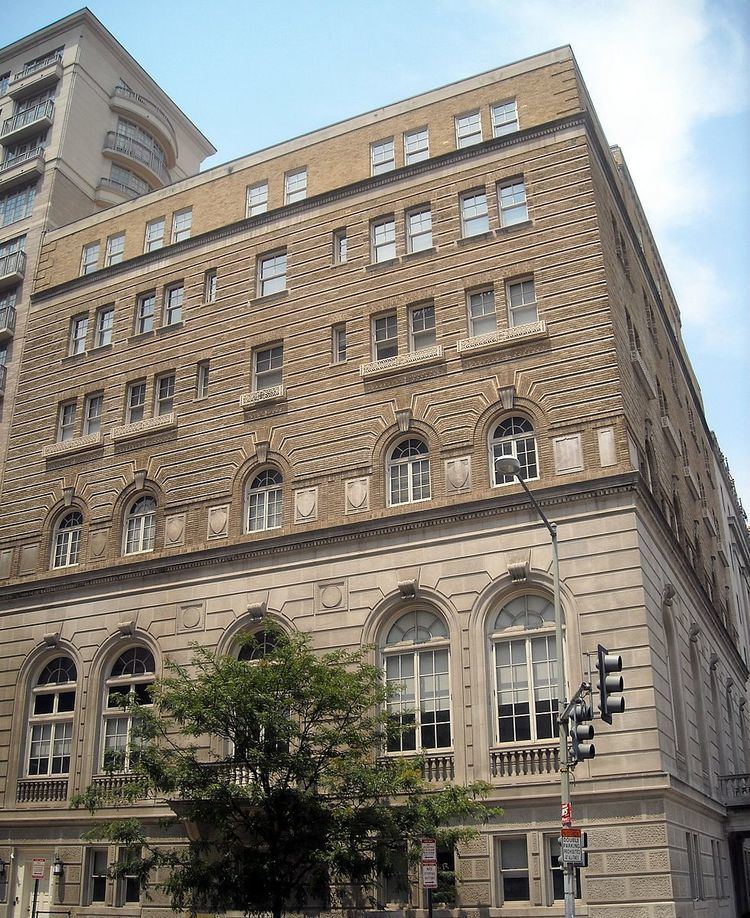Built 1912 NRHP Reference # 00001032 Opened 1912 | Architectural style Other Designated NHL April 5, 2005 Added to NRHP 13 September 2000 | |
 | ||
Location 900 Fifteenth St. NW, Washington, D.C. Architect Totten, George Oakley; Porter, Irwin Stevens, et al. Similar Folger Shakespeare Library, Arena Stage, Ford House Office Bui, Takoma station, Battery Kemble Park | ||
United Mine Workers of America Building, also known as University Club is an historic building, located at 900 Fifteenth St. Northwest, Washington, D.C. in the Downtown neighborhood.
History
From the National Park Service's Statement of Significance (as of designation - April 5, 2005):
Beginning in 1937, this building served as the headquarters of the United Mine Workers of America union (UMW) that was associated with the rise of organized labor following the Congressional passage of pro-labor acts in the mid 1930s. Before and after World War II, the UMW was able to negotiate for higher wages, safer working conditions (including the Federal Mine Safety Act in 1952) and the creation of industry funded health and retirement benefits between 1945-1950. These goals became standard in contract negotiations between unions and management and served to lift millions of blue-collar workers into the middle class. This building was also home to the Congress of Industrial Organizations (CIO) from 1937 to 1940. This federaltion of unions, funded by the UMW in its formative years, covered the previously unrepresented mass-production workers, a segment of the work force that became the labor movement's most important constituency during the 1950s and 1960s, when working class Americans made their largest economic gains. From this building, formidable labor organizer John L. Lewis oversaw the UMW for more than two decades and founded and presided over the Congress of Industrial Organizations from 1937 to 1940. The increase in union membership that Lewis promoted, his leadership in charting the paths of contract negotiation, and his presence in Washington influenced relations between labor, capital, and government during the country's post-WWII economic boom.
It was declared a National Historic Landmark in 2005.
